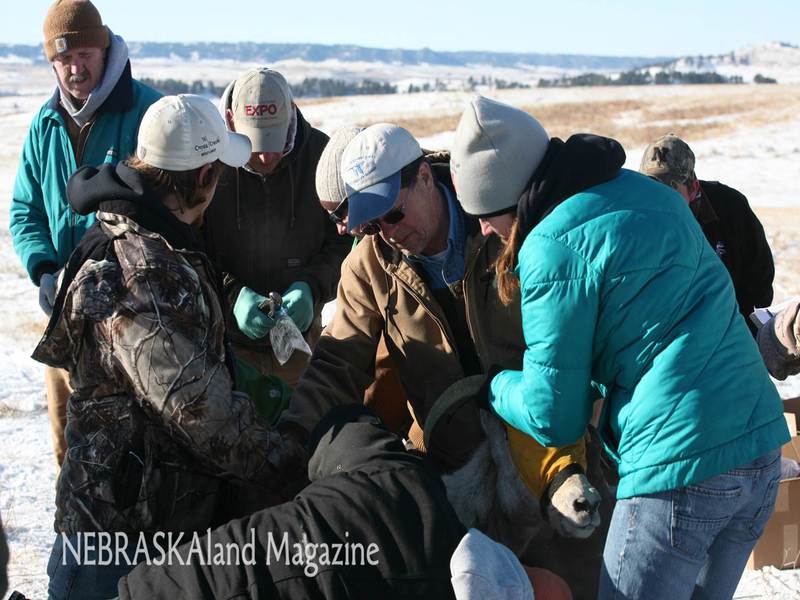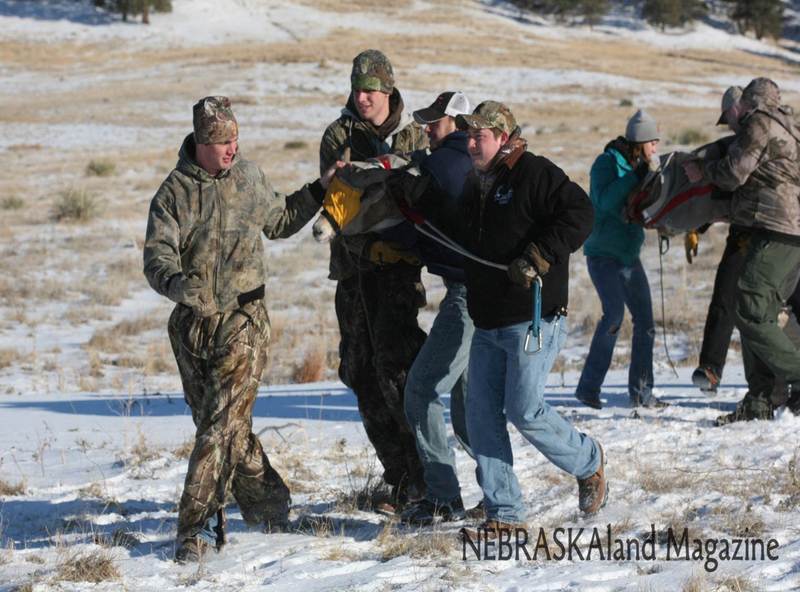CSC students take part in bighorn sheep capture in Wildcat Hills

GERING - During five different occasions, Nebraska Game and Parks Commission officials have looked to other states and Canada to find and capture bighorn sheep to release in their reintroduction efforts. This week, they didn’t have to leave their home state to do it.
Eleven Chadron State College students assisted with the project.
On Wednesday, the Commission contracted a helicopter crew to capture 26 sheep at the Hubbard Gap region of the Wildcat Hills which were moved by agency staff to Fort Robinson State Park and the Bighorn Wildlife Management Area, to the west and east of Crawford, respectively. Staff members moved the sheep, five of which were rams, to their new homes in three livestock trailers.
This week’s project is the first to move bighorn sheep from one area of Nebraska to another. The 26 sheep were among the latest to be fitted with tracking collars and ear tags to help agency staff keep tabs on the animals’ location and better manage their populations. Fourteen others were captured, collared, tagged and released back to the Wildcat Hills.
Samples taken from the animals will also help biologists better determine the herds’ health. The project is scheduled to move to the Cedar Canyon area of the Wildcat Hills, in hopes of meeting the overall goal of processing 52 sheep.
CSC students Jason Clark, Brandon Werner, Timmy Orenales, Kalen Grint, Riley Garey, Ty Grasz, Jody Mitteis, Sarah Rodgers, Mariah Gaston, Kaitlyn Steinwart and Ashlee Wright participated in the event.
Bighorn sheep were native to the butte country of the Nebraska Panhandle, but disappeared from the landscape in the early 1900s because of disease, habitat loss and unregulated hunting.
A herd was reintroduced to Fort Robinson in 1981, where it was released after several years of captivity. Release efforts in 2001, 2005, 2007 and 2012 have resulted in a sheep population that resides in areas of the Pine Ridge between Harrison and Chadron, and the Wildcat Hills south of Gering and east to McGrew.
Todd Nordeen, northwestern district wildlife manager, said the species has thrived in some areas and has struggled in others. The fact that the sheep populations in Nebraska are now able to supplement struggling herds with sheep from another area of the state is a success story in itself, he said.
“We’ve had our ups and downs with disease issues and so forth, which has set back some of these populations,” Nordeen said. “Fortunately, down in the Hubbard Gap region of the Wildcat Hills those sheep have done better than the ones at Fort Robinson.”
Prior to Wednesday’s captures, the two bighorn herds in the Wildcat Hills were estimated to consist of 210 animals, while the three herds in the Pine Ridge numbered 175. Before the new arrivals, the Fort Robinson herd had dwindled to an estimated 27 sheep.
Category: Campus News, Range Management, Student Awards & Achievements

